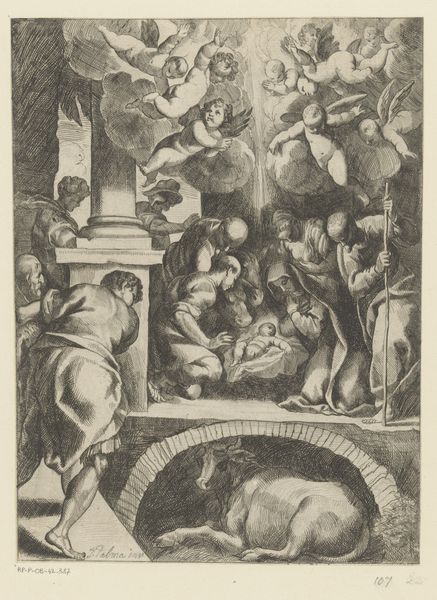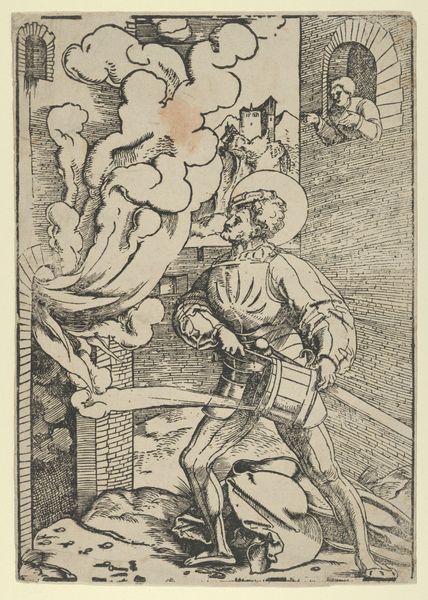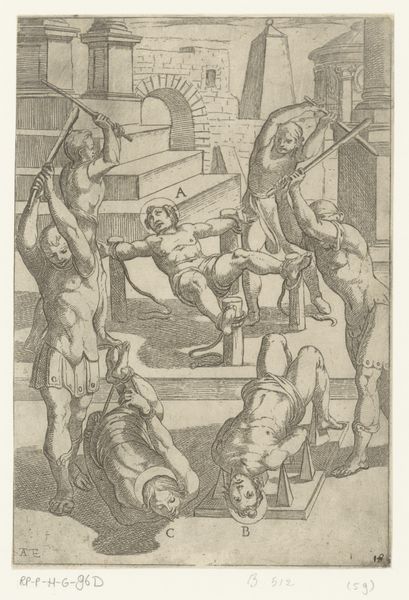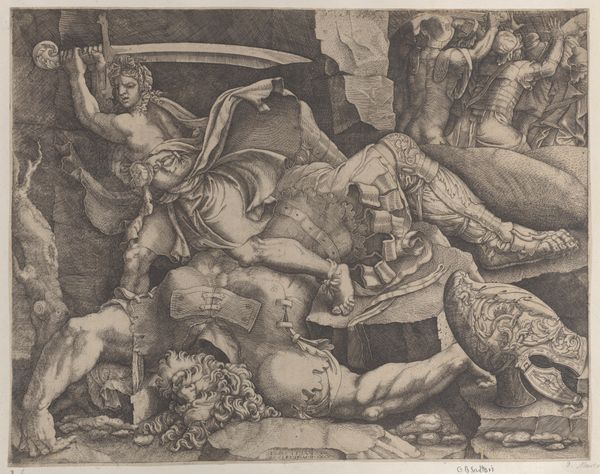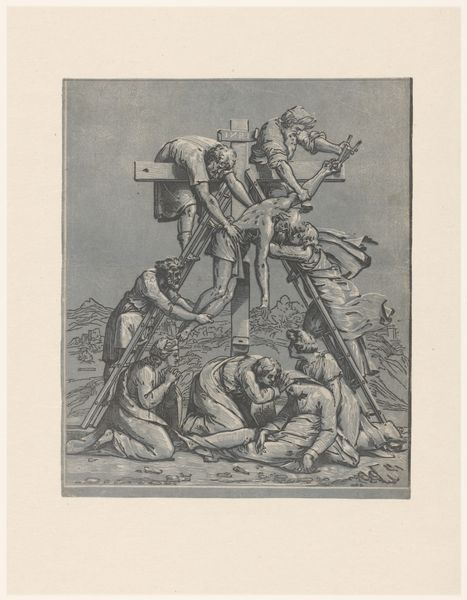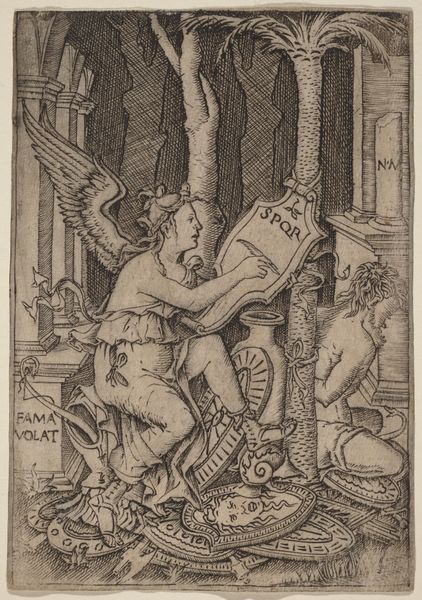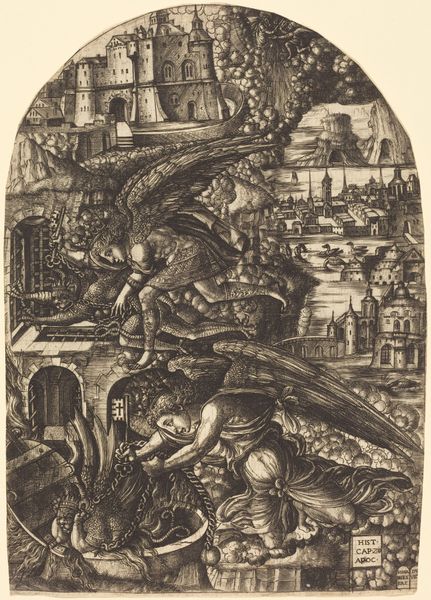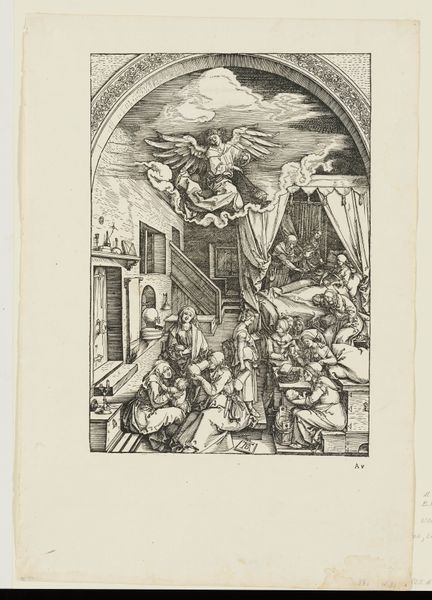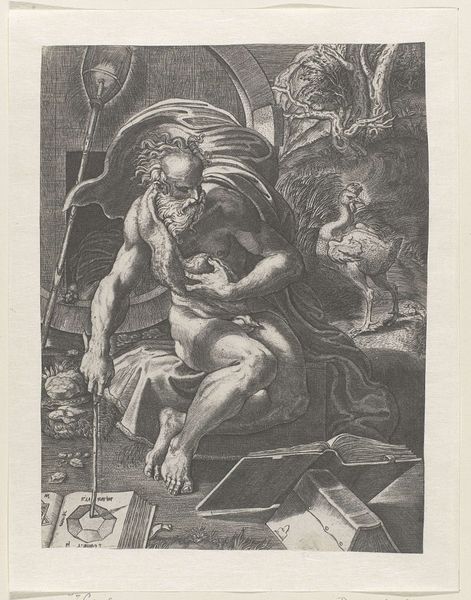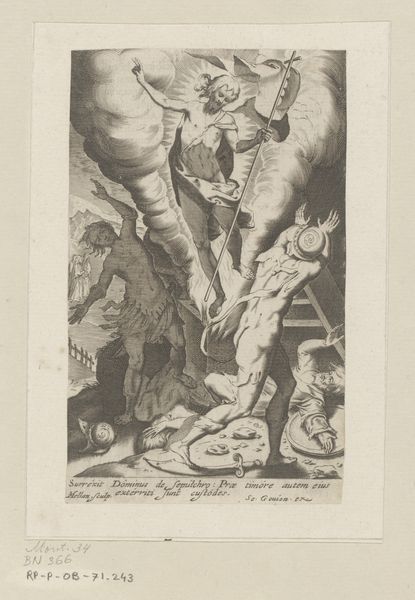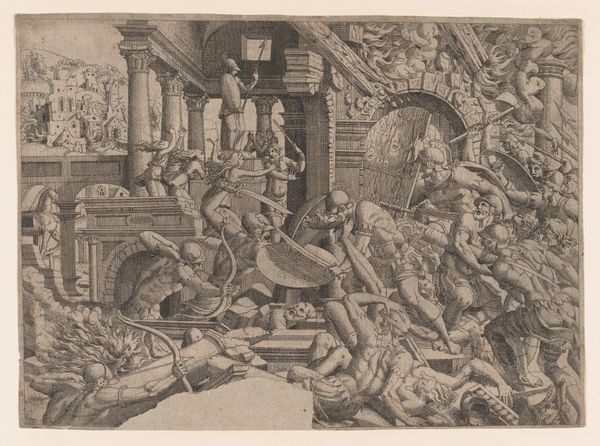
print, engraving
# print
#
figuration
#
11_renaissance
#
history-painting
#
italian-renaissance
#
engraving
#
christ
Dimensions: height 265 mm, width 181 mm
Copyright: Rijks Museum: Open Domain
Curator: Here we have Giorgio Ghisi’s "Resurrection of Christ," an engraving made sometime between 1530 and 1582. The Rijksmuseum is fortunate to have it in its collection. What's your first impression? Editor: It’s strikingly theatrical! The dramatic lighting, the fallen soldiers, the figure of Christ almost bursting forth. There's a potent sense of drama that feels almost staged, despite the religious theme. Curator: Yes, and if we consider Ghisi's context, we understand how important staged imagery was to both religious and political power. Prints like this were not just devotional objects, but propaganda distributed across Europe, often fueling the flames of the Reformation. The image is inherently entangled with the complex dynamics of belief, authority, and rebellion during this era. Editor: Absolutely. Notice the way Christ is presented. The visual symbolism, a figure rising from the darkness, literally shattering expectations. It speaks to a powerful disruption of the established order and hope for radical spiritual transformation. His figure, set against this radiant halo, presents him as the ultimate symbol of divine light conquering worldly darkness. Curator: The positioning of Christ also embodies ideals of power and masculine virility, ideas that played key roles during the Renaissance as artists sought to align Christianity with humanist philosophical currents. The swooning or collapsing soldiers only amplify his power, as do the details of their armour, signaling worldly but ultimately ineffective strength. Editor: The tumbled forms around the sepulchre create chaos, in stark contrast to Christ’s smooth, upward momentum. But consider also how prints such as these shaped the evolving Western imaginary. The image, the symbolic visual cues, helped solidify a set of shared religious beliefs. This helped maintain cultural cohesion at a time of immense social upheaval. Curator: And it’s precisely in understanding that moment of social upheaval—the fissures that broke open the stability of the church, state, and family—that we can see how this image functions. Its representation of divine power isn't simply transcendent; it's embedded in a complex web of social and political contestations. Editor: A reminder that symbols, especially enduring ones, like Christ's resurrection, always carry the weight of both tradition and evolving social narratives. This tension is precisely why an image like this one continues to provoke thought and inspire debate, centuries after its creation. Curator: Precisely!
Comments
No comments
Be the first to comment and join the conversation on the ultimate creative platform.
